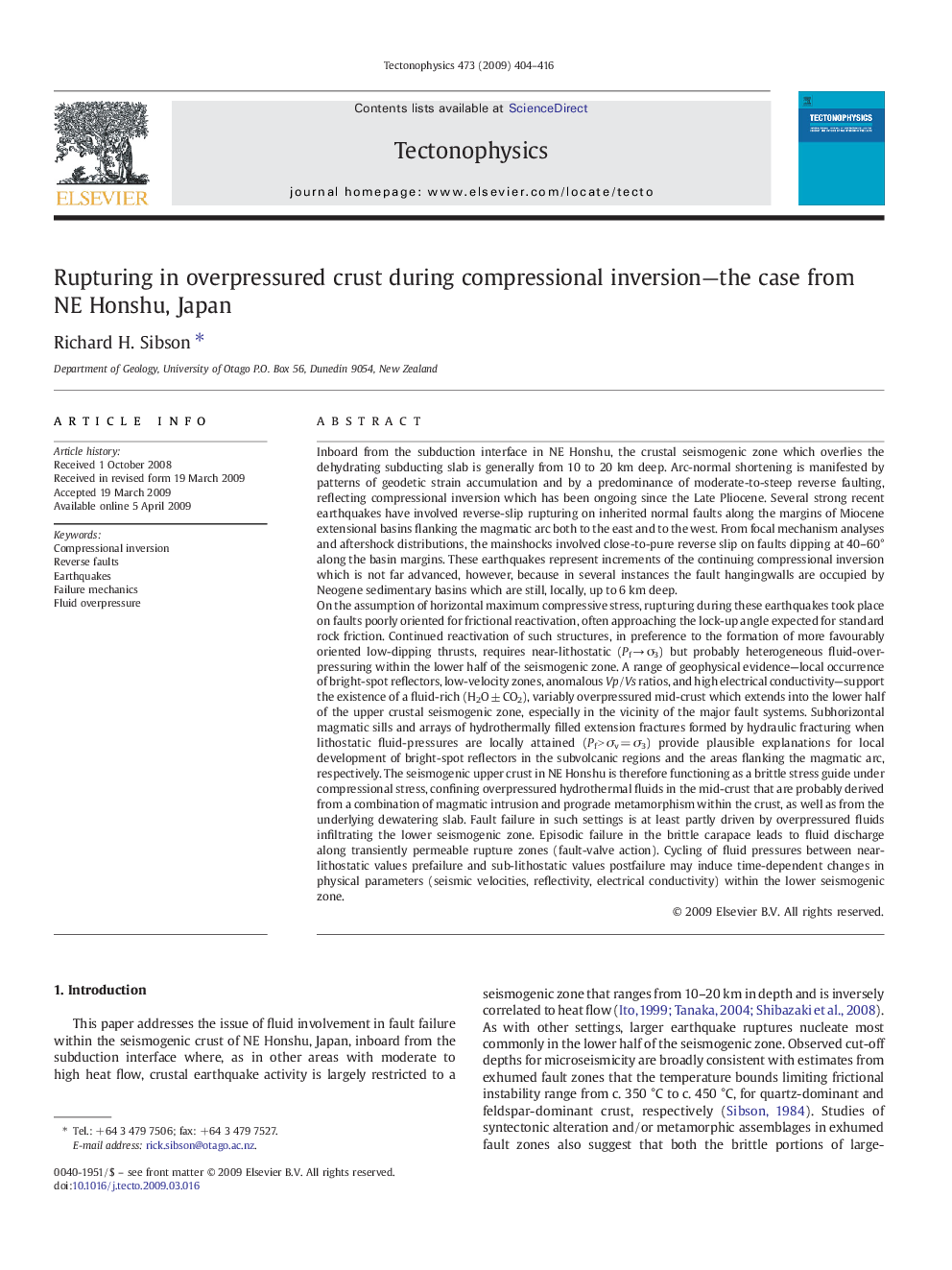| کد مقاله | کد نشریه | سال انتشار | مقاله انگلیسی | نسخه تمام متن |
|---|---|---|---|---|
| 4693962 | 1636888 | 2009 | 13 صفحه PDF | دانلود رایگان |

Inboard from the subduction interface in NE Honshu, the crustal seismogenic zone which overlies the dehydrating subducting slab is generally from 10 to 20 km deep. Arc-normal shortening is manifested by patterns of geodetic strain accumulation and by a predominance of moderate-to-steep reverse faulting, reflecting compressional inversion which has been ongoing since the Late Pliocene. Several strong recent earthquakes have involved reverse-slip rupturing on inherited normal faults along the margins of Miocene extensional basins flanking the magmatic arc both to the east and to the west. From focal mechanism analyses and aftershock distributions, the mainshocks involved close-to-pure reverse slip on faults dipping at 40–60° along the basin margins. These earthquakes represent increments of the continuing compressional inversion which is not far advanced, however, because in several instances the fault hangingwalls are occupied by Neogene sedimentary basins which are still, locally, up to 6 km deep.On the assumption of horizontal maximum compressive stress, rupturing during these earthquakes took place on faults poorly oriented for frictional reactivation, often approaching the lock-up angle expected for standard rock friction. Continued reactivation of such structures, in preference to the formation of more favourably oriented low-dipping thrusts, requires near-lithostatic (Pf → σ3) but probably heterogeneous fluid-overpressuring within the lower half of the seismogenic zone. A range of geophysical evidence—local occurrence of bright-spot reflectors, low-velocity zones, anomalous Vp/Vs ratios, and high electrical conductivity—support the existence of a fluid-rich (H2O ± CO2), variably overpressured mid-crust which extends into the lower half of the upper crustal seismogenic zone, especially in the vicinity of the major fault systems. Subhorizontal magmatic sills and arrays of hydrothermally filled extension fractures formed by hydraulic fracturing when lithostatic fluid-pressures are locally attained (Pf > σv = σ3) provide plausible explanations for local development of bright-spot reflectors in the subvolcanic regions and the areas flanking the magmatic arc, respectively. The seismogenic upper crust in NE Honshu is therefore functioning as a brittle stress guide under compressional stress, confining overpressured hydrothermal fluids in the mid-crust that are probably derived from a combination of magmatic intrusion and prograde metamorphism within the crust, as well as from the underlying dewatering slab. Fault failure in such settings is at least partly driven by overpressured fluids infiltrating the lower seismogenic zone. Episodic failure in the brittle carapace leads to fluid discharge along transiently permeable rupture zones (fault-valve action). Cycling of fluid pressures between near-lithostatic values prefailure and sub-lithostatic values postfailure may induce time-dependent changes in physical parameters (seismic velocities, reflectivity, electrical conductivity) within the lower seismogenic zone.
Journal: Tectonophysics - Volume 473, Issues 3–4, 3 August 2009, Pages 404–416